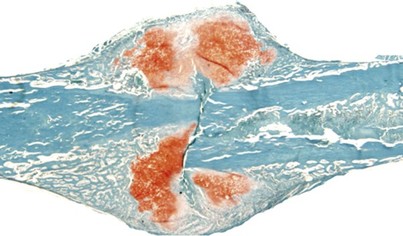Nonunion of Bone
Nonunion is a term which refers to the paucity and failure of the normal bone healing process after a fracture. For bone healing (union) to happen, the bone needs adequate stability, blood supply and good nutrition.
Stability
The basic principle of the treatment of fractures is that the broken pieces must be put back into position and prevented from moving out of place until they heal. Some fractures can be held in position with a cast while some others require surgical fixation with implants like screws, plates and nails or with external fixator frames.

Blood supply
Blood delivers oxygen, healing cells, and the body’s own chemicals necessary for healing (growth factors) to the fracture site. If the blood supply to the fracture site is compromised, the bone doesn’t get the necessary substances for healing. Nonunions are more likely to happen if the injured bone has a limited blood supply.
Some bones, such as toe bones, have inherent stability and excellent blood supply. They can be expected to heal with minimal treatment. Some other bones, such as the upper thighbone (femoral head and neck) and small wrist bones (scaphoid), have a limited blood supply. The blood supply can be destroyed when these bones are broken. Some bones, such as the shinbone (tibia), have a moderate blood supply, however, an injury can disrupt it. For example, a high-energy injury can damage the skin and muscle over the bone and destroy the external blood supply. In addition, the injury can destroy the internal blood supply found in the marrow at the center of the bone.
Diagnosis
Patients with nonunions usually feel pain at the site of the fracture which remains long after the initial pain of the fracture has disappeared. This pain may last months, or even years. It may be constant, or it may occur only when the broken limb is used.
To diagnose a nonunion, x-rays, computed tomography (CT) scans, and magnetic resonance imaging (MRI) are used to provide detailed pictures of the bone and surrounding soft tissues.
A nonunion may be diagnosed if the doctor finds one or more of the following:
• Persistent pain at the fracture site
• A persistent gap with no bone spanning the fracture site
• No progress in bone healing when repeated imaging studies are compared over several months
• Inadequate healing in a time period that is usually enough for normal healing.
Sometimes, after a nonunion is diagnosed, further imaging or lab tests may be requested to further investigate the cause of infection (i.e anemia, infection, diabetes, mechanincal instability) and treat it accordingly.
Treatment
The principles of treatment of nonunions basically include the optimization of the factor which caused the nonunion in the first place. If it has been diagnosed that the nonunion occurred because of inadequate stability across the fracture, then a revision of the fracture fixation to increase the stability may be indicated. If the main causative factor had been lack of blood supply then bone graft may be necessary. If infection is present, it must be controlled in order to efficiently treat the nonunion. Obviously, the methods by which these principles are applied, vary significantly depending in the actual location of the nonunion, the presence of implants and their type, the functional demands and comorbidities of the patient etc. The treatment plan is always tailored to each patient.





